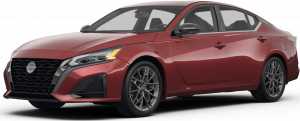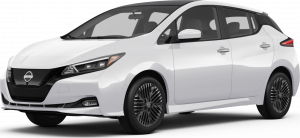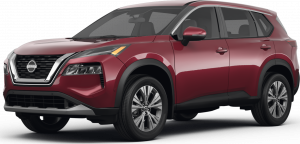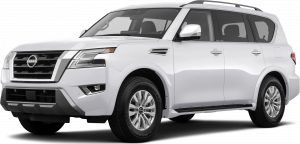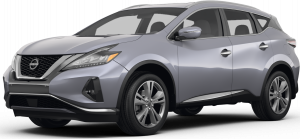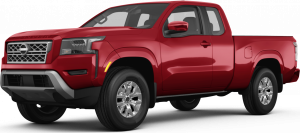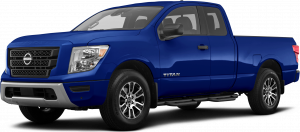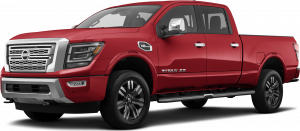The Evolution of Nissan Safety in Oceanside

Driving through Oceanside, with its breathtaking coastline and vibrant streets, demands a vehicle that’s not just about performance but also prioritizes safety. Over the years, Nissan has stood out as a brand deeply committed to evolving safety technologies. Let’s take a ride down memory lane and see how Nissan’s innovations have continually enhanced driver safety, making every journey around Oceanside safer and more secure.
A historical overview of how Nissan's safety technologies Evolution
| Era | Focus | Key Advancements |
|---|---|---|
| 1950s-1970s | Passive Safety Measures | Seat belts, Crumple zones, Collapsible steering columns, Energy-absorbing steering wheels, Material improvements (high-strength steel, shatterproof glass) |
| 1980s-1990s | Shift towards Active Safety | Anti-lock Braking System (ABS), Driver and Passenger Airbags |
| 2000s-2010s | Advanced Safety Features | Electronic Stability Control (ESC), Tire Pressure Monitoring Systems (TPMS), Advanced Airbag Systems (side, curtain, knee airbags) |
The Early Days of Nissan Safety Technologies (1950s-1970s)
During the early decades (1950s-1970s), automotive safety primarily focused on passive measures designed to protect occupants in the event of a collision. Here's a more detailed breakdown of the advancements made by Nissan during this era:
- Seat belts: While rudimentary lap belts were introduced earlier, the mandatory inclusion of three-point seat belts in all seating positions in the 1960s marked a significant step towards improved occupant protection.
- Crumple zones: Early crumple zones were strategically designed sections in the front and rear of vehicles that would deform and absorb the impact energy during a collision, minimizing the force transferred to the passenger compartment.
- Steering column design:
- Collapsible steering columns: These columns were designed to compress upon impact, reducing the risk of serious chest injuries for the driver.
- Energy-absorbing steering wheels: These wheels incorporated features like padded hubs to dissipate impact forces and minimize driver injury.
Material advancements:
- High-strength steel:
- Car manufacturers, including Nissan, began incorporating high-strength steel in strategic areas of the vehicle frame. This material offered increased rigidity in the passenger compartment while allowing crumple zones to deform effectively.
- Shatterproof glass: The use of laminated glass for windshields and side windows became more widespread. This type of glass was designed to crack instead of shattering upon impact, reducing the risk of occupant injuries from flying glass shards.
Limitations of Early Safety Features:
- Passive approach: These early measures solely focused on protecting occupants after a collision rather than actively preventing accidents.
- Limited effectiveness: While these features offered some degree of protection, they were not sufficient to ensure complete safety in all crash scenarios, especially at higher speeds.
Overall, the 1950s and 1970s marked the foundation for future automotive safety advancements. While the technology relied heavily on passive measures, it laid the groundwork for the development of more sophisticated and proactive safety systems in the years to come.
Safety Advancements: 1980s-2010s
1980s and 1990s: A Turning Point towards Active Safety
The 1980s and 1990s witnessed a significant shift in focus from purely passive safety measures to incorporating active safety systems that played a more proactive role in preventing accidents. Here's a closer look at the key advancements during this period:
Anti-lock Braking System (ABS): Introduced in the late 1970s and becoming increasingly common in the 1980s, ABS addressed a critical aspect of driver control during emergency braking situations.
- Function: ABS prevents wheels from locking up during hard braking, a scenario that could lead to loss of steering control and increased stopping distances.
- Technology: Wheel speed sensors detect potential lockup, and a hydraulic modulator rapidly pumps the brakes, allowing the wheels to maintain traction and enabling the driver to steer the vehicle away from obstacles.
- Impact: ABS significantly improved driver control during emergency braking maneuvers, reducing the risk of accidents.
Airbag Integration: Airbags became a crucial element of occupant protection in frontal collisions.
- Driver-side airbags: Introduced in the late 1980s, these airbags deployed rapidly upon frontal impact, cushioning the driver and reducing the risk of head and chest injuries.
- Passenger-side airbags: Followed the implementation of driver-side airbags in the 1990s, offering similar protection for the front passenger.
- Limitations: Early airbags were primarily designed for frontal collisions and were not always effective in other types of crashes.
Stepping into the 21st Century (2000s-2010s):
Building upon the foundation laid in the previous decades, the 2000s and 2010s saw a surge in the development and implementation of advanced safety features:
Electronic Stability Control (ESC): Introduced in the late 1990s and becoming mandatory in many countries by the mid-2000s, ESC significantly improved vehicle stability.
- Function: ESC utilizes sensors to monitor vehicle dynamics, such as steering angle, wheel speed, and yaw rate (vehicle rotation).
- Intervention: If the system detects a potential skid or loss of control, it can automatically apply braking to individual wheels and reduce engine power to help the driver regain control of the vehicle.
- Impact: ESC drastically reduced the risk of rollovers and improved overall vehicle handling, especially in adverse weather conditions or during sharp maneuvers.
Tire Pressure Monitoring Systems (TPMS):
- Function: Introduced in the early 2000s, TPMS constantly monitors tire pressure and alerts drivers if a tire becomes underinflated.
- Importance: Maintaining proper tire pressure is crucial for optimal handling, fuel efficiency, and reducing the risk of tire blowouts.
Advanced Airbag Systems: Beyond the initial driver and passenger airbags, further advancements were made:
- Side airbags: Deployed in the seats to offer protection in side-impact collisions.
- Curtain airbags: Mounted along the roof pillars and deployed from the side window frames to shield occupants during rollovers.
- Knee airbags: Offered additional protection for the driver's lower extremities in frontal crashes.
These advancements marked a significant leap in automotive safety by not only providing better protection in the event of a collision but also actively assisting drivers in avoiding accidents altogether.
The Era of Advanced Driver-Assistance Systems (ADAS) (2010s-Present):
- Nissan Safety Shield: Launched in 2013, this suite bundled various driver-assistance features like:
- Automatic Emergency Braking (AEB) with Pedestrian Detection
- Lane Departure Warning (LDW)
- Blind Spot Warning (BSW)
- ProPILOT Assist: Introduced in 2018, this system offered a more comprehensive approach to driver assistance:
- Intelligent Cruise Control (ICC) maintained a set distance between the car and the vehicle ahead.
- Lane Centering Assist (LCA) helped keep the vehicle centered within its lane.
- Traffic Sign Recognition (TSR) displayed traffic signs on the instrument cluster.
- Focus on emerging technologies:
- Nissan Intelligent Mobility (NIM): This vision outlines the company's commitment to developing a future of safer and more intelligent mobility through interconnected technologies.
- Continuous development of advanced features:
- Rear Cross Traffic Alert with Rear Automatic Braking
- Driver Alertness Monitor
- Around View® Monitor with 360° camera
Looking Ahead:
- The future of Nissan's safety technologies is likely to involve further advancements in:
- Autonomous driving features: Continuously refining ProPILOT Assist towards offering more automated driving functionalities.
- Vehicle-to-everything (V2X) communication: Enabling cars to communicate with each other and infrastructure for enhanced safety and traffic management.
- Artificial intelligence (AI): Utilizing AI to anticipate potential hazards and take corrective actions even faster.
By continuously innovating and prioritizing safety, Nissan strives to create a future where driving becomes a safer and more enjoyable experience for everyone.
Mossy Nissan Oceanside: Your Gateway to Advanced Safety and Efficiency
From its early innovations to today’s intelligent safety systems, Nissan’s journey reflects a deep-rooted commitment to protecting drivers, passengers, and pedestrians. For those of us cruising through Oceanside, this evolution offers not just a safer driving experience but also a testament to how innovation can enhance our lives on the road.
At Mossy Nissan Oceanside, we're proud to be at the forefront of offering vehicles equipped with Nissan's advanced safety technologies, designed to keep Oceanside drivers and their families secure on every journey. For a deep dive into how these features work to protect you, explore our guide on Nissan Safety Features at Mossy Nissan Oceanside. If you're contemplating the shift towards electric vehicles or sticking with traditional gasoline power, our comparison Compare Nissan Electric vs. Gas Vehicles in Oceanside provides valuable insights to help you make an informed choice. And for those keen on optimizing fuel efficiency without compromising performance, our tips on Maximize Your MPG with Nissan in Oceanside can significantly enhance your driving experience. Dive into these resources and let Mossy Nissan Oceanside guide you through a world where safety meets innovation, ensuring your Nissan is not just a mode of transportation, but a guardian on the road.



